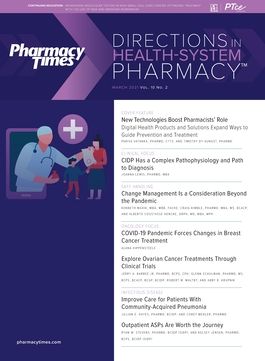Publication
Article
Pharmacy Practice in Focus: Health Systems
340B Program Compliance Tools Vary in Ability, Accuracy
Author(s):
Technology is essential, but not all solutions meet every goal or offer the same capabilities.
Passed by the US Congress in 1992, the 340B drug pricing program allows eligible health care organizations, known as covered entities (CEs), to receive discounts on outpatient drugs.
The program was designed to ease the financial burden on safety net institutions with disproportionate indigent, Medicaid, or Medicare populations. With drug prices and 340B compliance and regulation under scrutiny, CEs need experts who understand the program and advanced software solutions to remain compliant.
However, many CEs use tools designed for other uses, such as electronic health records or pharmacy benefits, to manage their 340B programs. Making it more complicated, many companies that provide 340B software are not 340B specialists—some do not even focus on community health centers or health centers—and therefore miss the evolving, specific needs of CEs. As the drug pricing program has grown, confusion and misinformation have spread.
Whereas technology is essential for 340B tracking, not all solutions align with every CE's goals or deliver the same capabilities. Defining needs is key before deciding how to participate.
The program's benefits are significant to both providers and the communities they serve, but compliance helps protect a program's integrity.
Each type of tech solution is only as strong as the holistic understanding of it. Solutions developed by individual CEs in the early days, before commercial options were available, are rarely deployed today.
Split billing is the process of separating inpatient and outpatient hospital charges from 340B-eligible areas to identify all outpatient charge codes for drug replenishment opportunities at 340B pricing. The process generates a billing feed or report from the hospital information technology system to the split-billing consultant (for manual solutions) or split-billing vendor (for software solutions).
MANUAL SPLIT BILLING
Usually called "software," these solutions are more accurately described as manual aggregation of files sent to a consultant or other group. Because they depend on the subjective interpretation of outside parties, they are inherently risky. Although they can be operationalized quickly, they are not scalable; they miss eligible dispensations from mixed-use areas, such as the catheterization laboratory or emergency department; and they provide limited reporting; among other drawbacks.
SPLIT-BILLING SOFTWARE
Most split-billing software solutions started as or still are a foundation of hospital pharmacy inventory management, which uses charge codes or charge descriptor masters (CDMs). This is a problem because CDMs are not associated with a specific National Drug Code (NDC), which, for 340B replenishment, requires a 9- or, preferably, 11-digit match. Instead, CDMs are associated with multiple brands, formulations, and strengths. Knowing the specific NDC is critical to managing a compliant program, so hospitals must actively establish them from CDMs. It also carried added costs for compliance consulting fees and lost capture opportunities. Still, some find split-billing software suitable for their needs.
RULES-BASED COMPLIANCE ENGINE
The newest and most advanced type of 340B software incorporates a rules-based compliance engine based on the CE's policies and procedures. It automates those processes to execute exactly the same way every day, regardless of who places orders.
This solution, which uses NDC data, was built specifically for 340B compliance and maximum capture opportunity. It has become a necessity to be compliance and prepared for audits from the Health Resources Services Administration (HRSA) and, increasingly, manufacturers. It also offers robust reporting to support transparency, but it is more expensive and takes more time for installation and training than other solutions.
WHAT IS THE IDEAL SOLUTION?
An ideal 340B software solution helps uses understand and optimize their programs, provides robust training, and offers account management. Hospitals must compare rules-based engines with split-billing software in 3 areas. These are:
- Capture of savings. Most hospitals with a split-billing solution take 1 of 2 approaches to capturing 340B eligibility in mixed-use areas. Some simply assume it is impossible and exclude it from their programs altogether, missing out on eligible outpatients. Others consider the entire mixed-use area eligible, including ineligible inpatients, violating 340B regulations. More recent solutions to capture, verify, and report referrals allow for further optimization.
- Compliance. Incorporating successful compliance policies is critical, given the increased focus on audits. Split-billing software emerged before audits became a concern and was not designed to incorporate an entity's policies and procedures, a key for compliance. A rules-based engine, however, should provide 100% compliance with policies and procedures and allow users to meet all 340B requirements autonomously. It provides a consistent, replicable approach to audit and compliance reporting. Also, a rules-based engine that includes audit-preparation tools should instill confidence. Ideally, the software features integrated tools built for a hospital pharmacy and designed specifically for auditing.
- Workflow. The price of software is directly related to the amount of work and manual intervention required after installation. Although a rules-based engine requires some initial oversight and preparation, the payoff is reduced ongoing workflow. Proactive alerts, reporting, and integration with manufacturers, wholesalers, and other third parties also help save time.
THE BIG PICTURE
The return on investment in 340B program solutions is a function of the whole picture: compliance, fixed costs, lost savings, and risk. With HRSA/Office of Pharmacy Affairs audits managed by Congress, compliance is critical for any successful CE.







